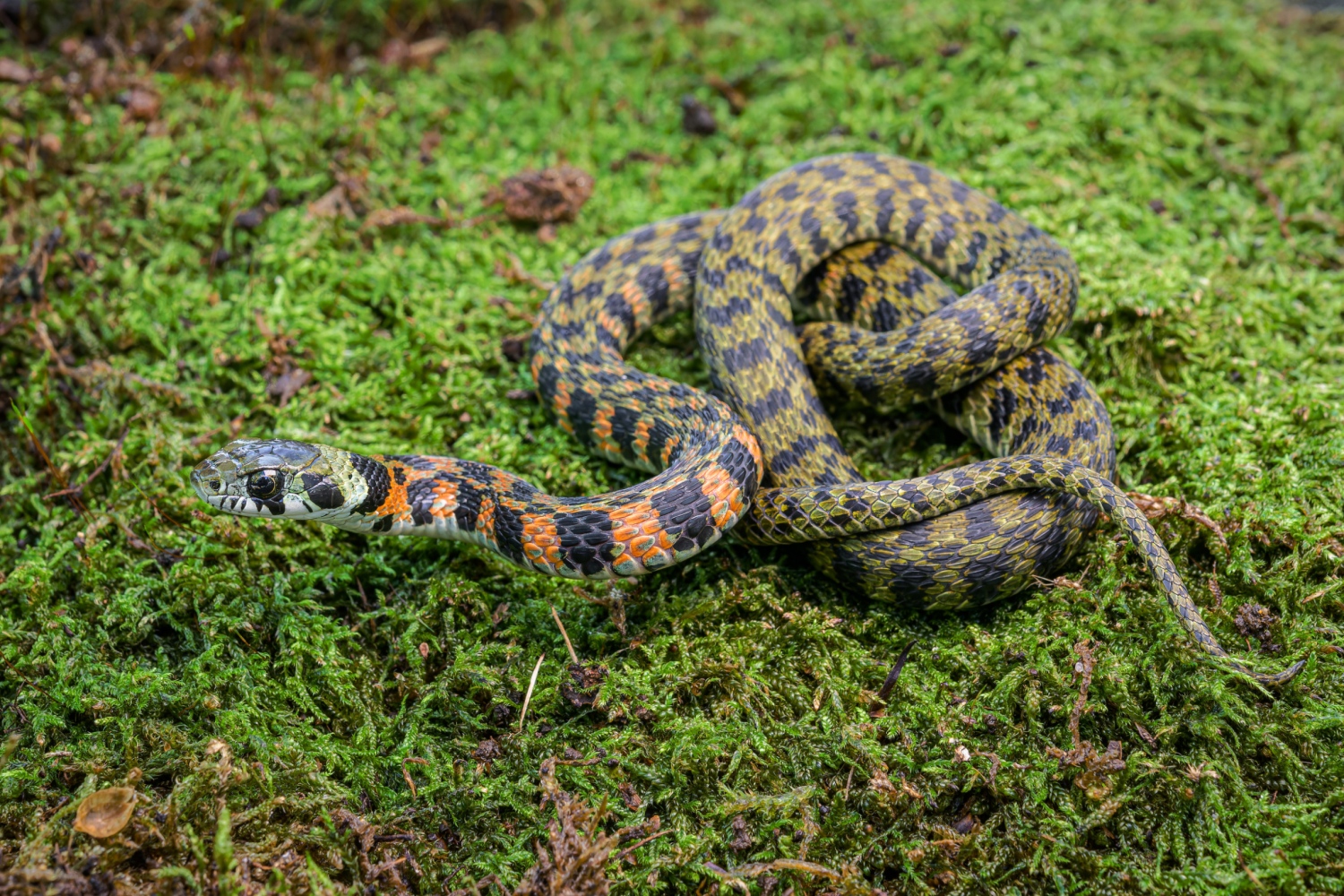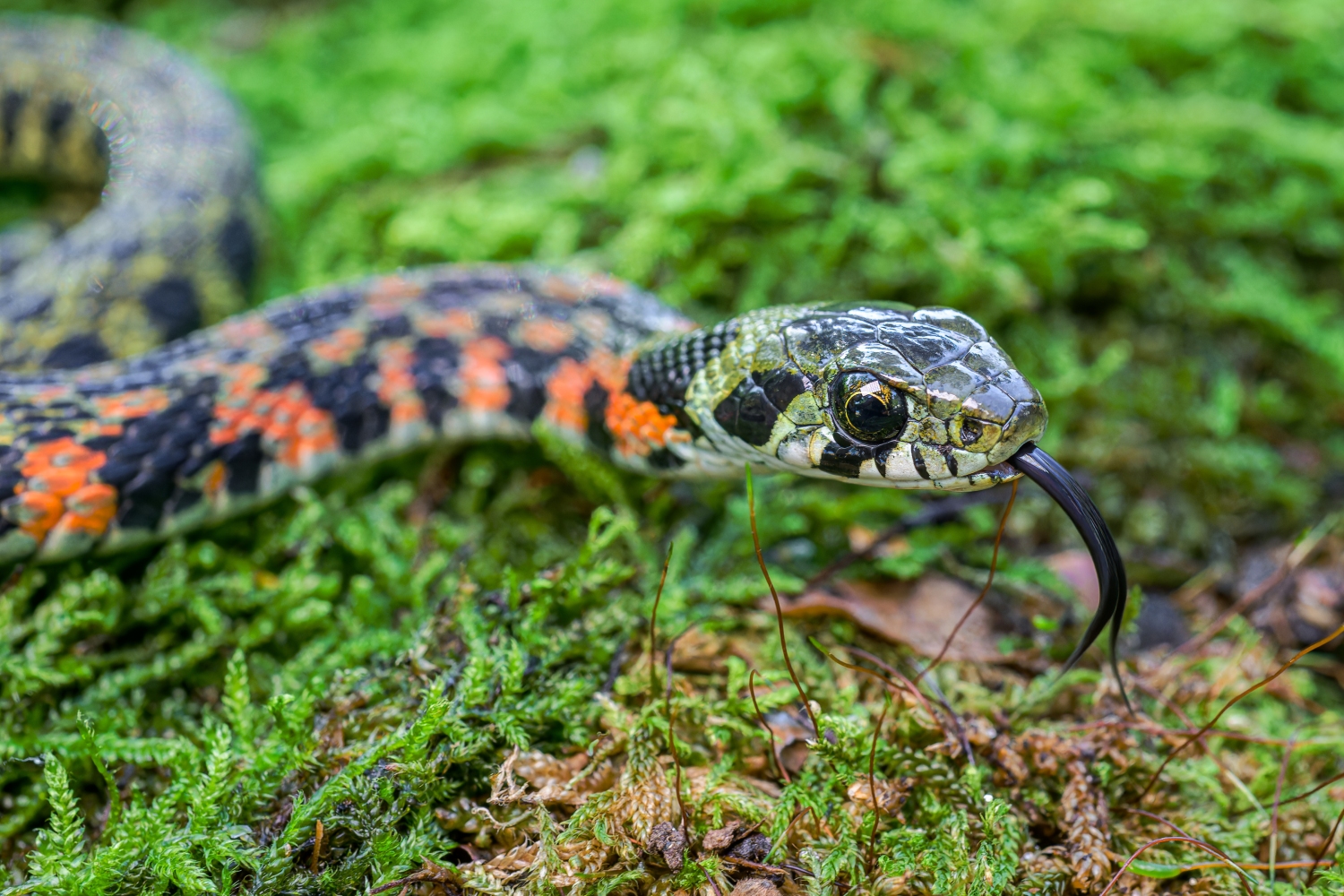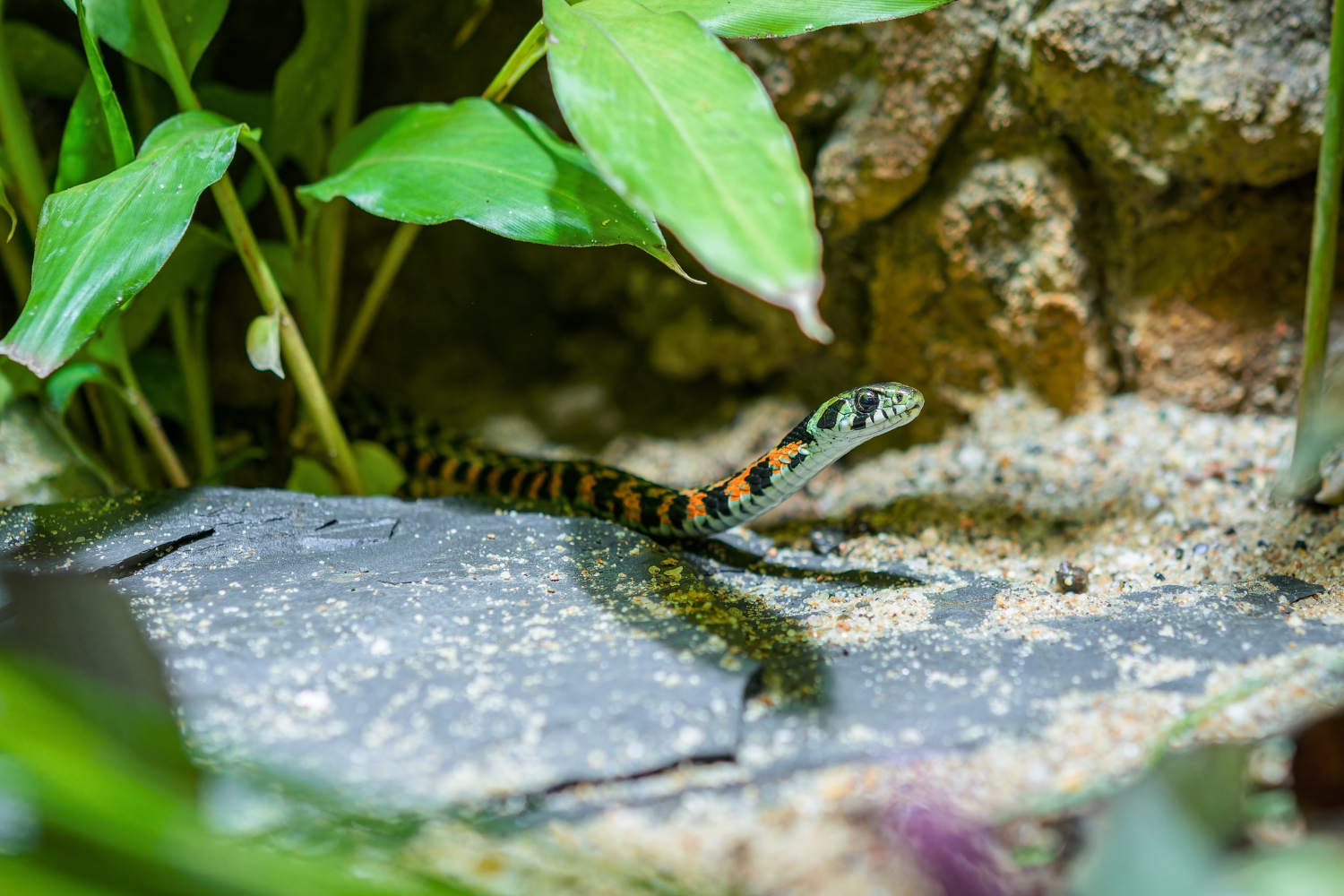Prague Zoo Has Poisonous/Venomous Snakes
13. 09. 2024
Prague Zoo’s visitors can now see tiger keelbacks that are rarely kept in zoos. These brightly coloured reptiles are fascinating, due to both their colour and because they are venomous and poisonous. Their venom is toxic, and is injected into their prey’s body, however, because they eat toads, they absorb other toxins, which they then store and use in self-defence. Two juveniles of these poisonous/venomous snakes have taken up residence in the Terrarium.

The first tiger keelbacks came to Prague Zoo in late 2023 and from 2024 visitors can see them in the Terrarium. Photo Petr Hamerník, Prague Zoo
Reptile curator Petr Velenský said of them, “There is a difference between 'poisonous' and 'venomous'. In the case of 'poisonous' it is poisoning caused by the poison encountering the body of the poisoned person by ingestion or other means. In this case, the animal only uses the poison to defend itself; the attacker poisons itself. A typical example of this would be the dart frog. In the case of 'venomous', poisoning is always caused by the intentional injection of toxins by the venomous animal into the body of the prey or the attacker. Tiger keelbacks stand out for being both.”
So what makes the tiger keelback poisonous? It sequesters steroidal toxins from the toads it ingests and stores them in the nuchal (neck) glands. When threatened, it stops and arches a conspicuously coloured, “tiger-striped” area of the neck, from where it releases the accumulated poison through cracks in the soft skin.

Bearing a striking resemblance to the grass snake, the tiger keelback does not deny it’s a natricine snake (Natricinae), but it is evidently more colourful. Photo Petr Hamerník, Prague Zoo
Expert reptile breeder Vojtěch Víta, said, “What’s more, repeated observations prove that this poison can also be sprayed into the air in the form of tiny droplets or even an aerosol. Perhaps one of the most remarkable aspects of this snake is that the females can transfer the poison they’ve obtained to their young.”
So what makes the tiger keelback venomous? In addition to the poison used for defence, it also has fangs at the back of the mouth that it uses for active hunting. The venom of this species affects blood coagulation, but bites on humans are rare and are not usually serious.
Prague Zoo’s visitors will find the tiger keelbacks in the Terrarium more or less directly opposite the entrance door. Two roughly half-metre long keelbacks are in the exhibit together with puff-faced water snakes. In the wild, tiger keelbacks inhabit forests and meadows close to water bodies in Japan, Korea and eastern Russia and China.

Apart from Prague Zoo, only two European zoos exhibit the attractive tiger keelback - in Estonia and Austria. Photo Petr Hamerník, Prague Zoo








